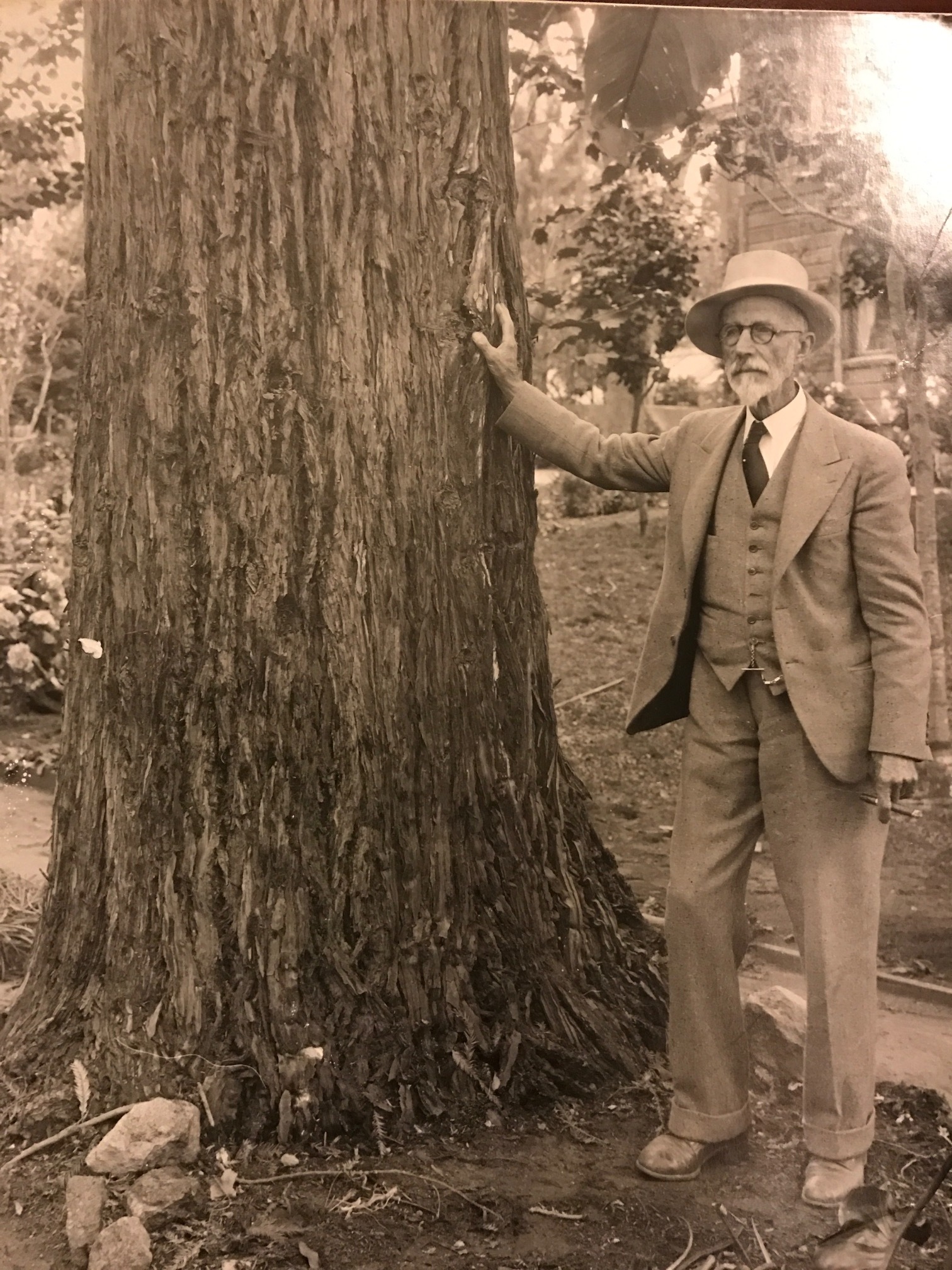Harry Ashland Greene
Harry Ashland Greene was born on January 12, 1852 in San Francisco. He was the second of five children born to William Greene and Anne Elizabeth (née Fisk) who had settled in California in 1849. Greene was initially educated by private tutors and then at City College and Santa Clara College. He continued his studies at the Military Institute in Poughkeepsie, NY before traveling to Paris in 1870. His stay in France was cut short by the outbreak of the Franco-Prussian War, and after a visit to England he returned to San Francisco to study at the Pacific Business College.
Greene began his career in mining in Placer County. On his return to San Francisco, he briefly held a clerical position at George Babcock & Co., large dealers in produce and grain. He then became a stock broker and in 1874 formed a brokerage firm with his older brother Clay M. Greene. However, his brother retired after a few months to pursue his career as a playwright. Greene continued with Greene & Co until ill-health forced his retirement in 1890. He left with the record of being the oldest commission stock broker to have not gone under because of financial disaster.
He retired at the Greene Mansion in the city of Monterey which he had originally built in 1886 as a summer home. Designed in an eclectic Victoria, Moorish Revival style, the house still stands today as the Greene Mansion and is one of the earliest surviving residences in New Monterey. Over the years, he added a coach house and barn and built up an extensive garden of rare plants and shrubs.
While living in Monterey, Greene became a key figure in the development of the city. By 1894, his Monterey Electric Light and Development Company was providing electricity to much of Monterey. He organized the Monterey & Fresno Railroad and became vice-president of the Monterey & Pacific Grove Street Railroad. He also created and invested heavily in the Bank of Monterey, serving briefly as the ceremonial first cashier. Greene was 80 years old when he saw the successful culmination of his twenty-year campaign for the building of a breakwater to protect Monterey harbor. At considerable personal expense, Greene, who became known as "Breakwater Harry," had lobbied both the California State Legislature and the US Congress for the necessary funds. At a ceremony in 1932 to mark the start of the breakwater's construction, Greene pulled the lever which sent the first granite boulders into the bay.
Greene’s civic activism also extended to the preservation of Monterey's history. In 1896, he was Director General of the California Jubilee and in 1899 led the campaign by the Native Sons of the Golden West to save Colton Hall, the site of California's first constitutional convention, from demolition. Greene found more desirable land for the new school which the city planned to build on the site of Colton Hall and organized a public subscription to raise money for its purchase.
Six years later, Greene helped to rescue and preserve the remains of the historic Vizcaíno-Serra Oak. In 1903, the huge centuries-old tree was damaged by workmen who eventually chopped it down in 1905 and threw it into the Monterey Bay. With the help of local fisherman, the pastor of the Cathedral of San Carlos Borromeo had the tree fished out of the bay while Greene provided financial help to preserve the remains of the trunk and erect it behind the cathedral. He also commissioned local craftsmen to make several chairs out of its branches, two of which he donated to the local parlor of the Native Sons of the Golden West.
In his later years, Greene devoted much of his time and money to promoting better forestry and improving home gardens in Monterey. On Arbor Day 1925, the city honored his work with the planting of a Sequoia sempervirens in the park surrounding Colton Hall.
Harry Greene died at his home, the Greene Mansion, in Monterey on November 13, 1933 at the age of 81. His ashes were buried in the El Encinal Cemetery. After his death, the city named the island in the middle of Lake El Estero in his honor.



